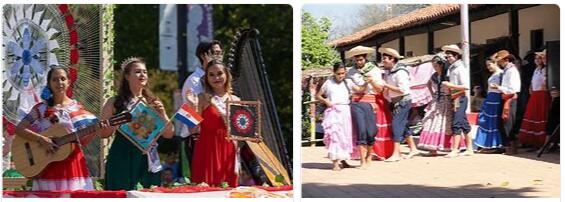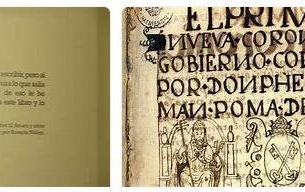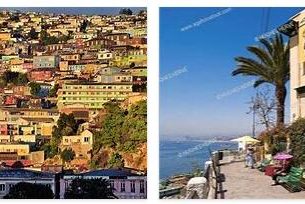TERRITORY: ENVIRONMENT
In relation to the variety of rainfall, the vegetal mantle takes on different aspects: in the eastern part, more humid, especially in the higher areas or along the waterways, the landscape is dominated by the tropical forest, with cedar, mahogany, apacho, acajoú plants, quebracho blanco, palms (including the one called babassú), the Ilex paraguayensis, typical of Paraguay and from which the yerba-mate used to prepare a slightly exciting and very widespread drink is obtained) and with a dense undergrowth of lianas and epiphytes. In the plains, the tropical forest yields to savannas, both herbaceous (campos limpios) and arborate (campos cerrados). Very tall grasses, ferns and aquatic plants, such as the huge Victoria cruziana water lily, characterize the esteros. In the Chaco, on the other hand, the steppe expanses predominate – however, there is no lack of tree savannahs – with plants that tolerate drought well such as thorny shrubs, cacti etc.; in the higher areas there are woods of quebracho colorado, precious essence from very hard wood. Forests still cover almost half of the national territory (46.5%), part of the great Atlantic Forest which, from the Brazilian coast, crossed Paraguay and reached the north-eastern sector of Argentina. However, the phenomenon of deforestation is alarming: it began in past centuries to make room for cultivated areas, and has continued uncontrollably, causing soil erosion, among other things. The fauna also differs in relation to climatic zones and vegetation: there are jaguars, pumas, rheas, guanacos, monkeys, armadillos, tapirs, ocelots, peccaries, anteaters, reptiles, including caimans and various snakes, numerous species of birds including parrots, parakeets, toucans, woodpeckers, ibis, herons. The protected areas (6% of the country’s surface) include 14 recognized national parks, as well as biological and ecological reserves, and are managed by SEAM, the Secretariat for the Environment, which has the task of coordinating and executing the heritage protection programs. environmental and education. Furthermore, UNESCO has identified six Paraguayan areas as Wetlands of International Importance, for a total of about 786,000 hectares, and has included in its list two Biosphere Reserves: the Bosco Mbaracayú (a nature reserve designated in 2000 and managed in private level, which encloses one of the remaining parts of the Atlantic Forest and houses a small indigenous community) and El Chaco, designated in 2005, which includes a large northern portion of the region inhabited by three different Indian communities, in which six nationally protected sites are inserted between national parks and nature reserves. Both reserves are considered to be at risk for the loss of endemic habitats and biodiversity, due to poaching and agricultural and livestock exploitation, which produces a reduction in forests and an increase in water and soil pollution due to the use of chemical substances.
CULTURE: TRADITIONS
While almost everywhere ancient customs and traditions are disappearing, in Paraguay much of what is linked to the first colonial relationship between Europeans and Indians has remained intact. According to thereligionfaqs, this most likely follows from the isolation in which the Paraguayan colonies and especially the indigenous communities, the famous reducciones, remained.organized by the Jesuits since the century. XVII. However, there are few pure descendants of the Guaraní, that is of the people who lived in these lands before the arrival of the Spaniards, the country is now populated for the most part by mestizos. Indigenous customs have superimposed on Spanish ones and the Church has superimposed its religious schemes on ancient beliefs, so religious celebrations are marked by traditional celebrations. Masses, processions, blessings are accompanied by music, songs, fireworks, parades, fairs, games. In Paraguay autos or religious mysteries are still often represented, with masked characters. Among the many religious feasts, that of the Ornate Cross (Curuzú yeguá) in which the symbol of Christianity is decorated with loaves in the form of plants or animals. Alongside religious beliefs, magical and payé beliefs are still cultivatedis the name used to indicate both the spell to do good or evil, and the person who does it and who advised it. In a world so bound by the idea of the supernatural, family descent is considered a privilege so much so that there has been an uncontrolled spread of illegitimate children (also as a result of the political ban on unions between whites and Indians, now abolished, which however has contributed to create a numerical imbalance between the sexes, in favor of females). Log huts with thatched roofs, with doors made of animal skin, are frequent dwellings, especially among peasants. The hut generally consists of two rooms: kitchen and bedroom. Any family or public celebration is emphasized by music and dance. The most popular dance is the chamané, a species of polka of European derivation spread in the century. XIX. Games and competitions are just as popular as dances. Very popular, albeit in decline, are the bull races, a kind of bloodless bullfighting in which the bullfighters simply tear away from the animal (deprived of horns) cards previously attached to different parts of the body (ears, tail, testicles). Craftsmanship is not widespread: the main product is nānduti, a delicate lace that women create while sitting in front of the huts, often with the inevitable cigar clenched between their teeth. The habit of smoking is in fact very common among Paraguayan women, who grow tobacco in their garden and often use it to quench appetite stimuli. Poor is the kitchen that lists few foods: corn cakes, chijá) of cassava flour, grilled tripe. Drinking mate and the national drink together is equivalent to consecrating feelings of affection and friendship.



